60+ Remarkable Uses for Vinegar You Need to Know
60+ Household Uses for White Vinegar
There are so many amazing uses for vinegar! It is a must-have in my pantry. You can use it in the kitchen, the bathroom, in your beauty regimen, in your cleaning routine, and more!
Plus, not only is vinegar versatile, but it’s also inexpensive and easily available. I haven’t tried all of these many vinegar uses and recipes myself, but I sure want to!
FYI: A lot of people (and animals) don’t like the smell of vinegar, but the odor usually disappears once it is dry. Feel free to share your experiences in using vinegar in the comments!
Vinegar in the Kitchen
- Clean chrome and stainless steel
- Shine your silverware – Soak in a mixture of 1/2 cup white vinegar, 2 tablespoons baking soda for 2-3 hours. Rinse under cold water and dry thoroughly with soft cloth.
- Better boiled eggs – Add 2 tablespoons vinegar for every quart of water to keep the eggs from cracking and make them easier to shell.
- Cooking – Regular and flavored vinegar has versatile acidic ingredients that add flavor. Mix vinegar and potato flakes as a dough enhancer.
- Clean the fridge – Use equal parts white vinegar and water to wash both interior and exterior. To prevent mildew, wipe with undiluted vinegar on a cloth.
- Make your own pickles
- Remove odors – Rub with distilled vinegar.
- Remove Berry Stains from hands– Rub with distilled vinegar.
- Clean scissors without rusting.
- Tenderize and purify meats – Soaking meat in vinegar overnight breaks down tough fibers to make meat more tender and kills bacteria. Experiment with different vinegar varieties for added flavor, or simply use apple cider or distilled vinegar if you intend to rinse it off before cooking.
- Clean dishwasher – Pour 1 cup undiluted white vinegar into the bottom of the unit, or in a bowl on the top rack. Run the machine through a full cycle without any dishes or detergent once a month. Note: If there’s no mention of vinegar in your dishwasher owner’s manual, check with the manufacturer first.
- Clean the microwave – Place a glass bowl inside filled with a solution of 1/4 cup vinegar and 1 cup water. Microwave for 5 minutes. Once the bowl cools, dip a cloth or sponge into the mixture and use it to wipe away stains and splatters.
- Disinfect cutting boards – Wipe with undiluted white vinegar.
- Dishwasher Rinse Agent – Prevent cloudy glassware
- Deodorize garbage disposal – Mix equal parts water and vinegar in a bowl, pour the solution into an ice cube tray, and freeze it. Drop a couple of “vinegar cubes” down your disposal every week or so, followed by a cold water rinse.
- Wash and preserve veggies and strawberries
- Check baking soda – Pour 2 tablespoons vinegar in a small dish and add 1 teaspoon baking soda. If the baking soda is still good, it should make the vinegar froth.
- Purge bugs from the pantry – Fill a small bowl with 1 1/2 cups apple cider vinegar and add a couple drops of liquid dish soap. Leave it in the pantry for a week; it will attract the bugs, which will drown. Then empty the shelves and thoroughly clean with 2 cups baking soda in 1-quart water.
More Cleaning with Vinegar
We use vinegar in lots of our cleaning recipes:
- Leather cleaner
- DIY cleaning wipes
- Daily shower spray
- Soap scum remover
- All-purpose cleaner
- Glass cleaner
- Tub/shower cleaner
We’ve given it a try, you should too!
- Remove candle wax – Soften wax with a blow-dryer on the hot setting and blot up as much as you can with paper towels. Then remove the remainder of wax by rubbing with a cloth soaked in a solution of equal parts white vinegar and water.
- Unclog and deodorize drains – Use a funnel to pour 1/2 cup baking soda followed by 1 cup vinegar. When foaming subsides, flush with hot water. Wait 5 minutes, then flush again with cold water.
- Clean paintbrushes – To remove dried-on paint from a synthetic-bristle paintbrush, soak it in full-strength white vinegar until the paint dissolves and the bristles are soft and pliable, then wash in hot, soapy water.
- Remove water rings left on furniture – Mix equal parts vinegar and olive oil and apply with a soft cloth while moving with the wood grain. Use another soft cloth to shine.
- Get rid of smoke or other odors – Place a shallow bowl about 3/4 full of white or cider vinegar in the room. The odor should be gone within a day.
- Wipe away mildew
- Whiten grout – Use a toothbrush dipped in undiluted white vinegar to scrub away the dinginess.
- Clean eyeglasses – Applying a few drops of white vinegar to your glass lenses and wiping them with a soft cloth will easily remove dirt, sweat, and fingerprints, and leave them spotless. Don’t use vinegar on plastic lenses, however.
- Erase ballpoint pen marks – Dab with undiluted white vinegar with cloth or sponge.
- Remove stickers – Saturate the corners and edges of the sticker with white vinegar, then scrape sticker off. Remove sticky remains by letting the vinegar sit on it for a minute or two, then wipe clean.
- Refresh rugs – Brush rug with a clean push broom dipped in a solution of 1 cup white vinegar and 1-gallon water. No need to rinse.
- Remove carpet stains – Rub light stains with a mixture of 2 tablespoons salt dissolved in 1/2 cup white vinegar. Let dry, then vacuum. For larger or darker stains, add 2 tablespoons borax to the mixture.
- Clean piano keys – 1/2 cup white vinegar mixed with 2 cups water. Use soft cloth damp with the mixture to wipe keys. Use a second cloth to dry. Leave keyboard uncovered for 24 hours.
- Remove mineral deposits from showerheads – Fill a small plastic bag half full with vinegar and tape it over the fixture. Let soak for about 1 hour, then remove the bag and wipe off any remaining vinegar.
- Clean rusty tools – Soak them in full-strength white vinegar for several days.
Laundry and Vinegar
- Fabric softener
- Color-set dark denim – Add 1 cup of white vinegar to the rinse cycle of your washing machine.
- Brighten small loads of white clothes – Add 1 cup of white vinegar to the rinse cycle of your washing machine.
- Reduce lint and static – Add 1 cup of white vinegar to the rinse cycle of your washing machine.
- Stop reds from running – Soak your new garments in a few cups of undiluted white vinegar for 10-15 minutes before their first washing.
- Clean washing machine – Pour in 2 cups vinegar, then run the machine through a full cycle without any clothes or detergent.
- Whiten dingy socks – Start by adding 1 cup vinegar to 1 1/2 quarts water in a large pot. Bring the solution to a boil, then pour it into a bucket and drop in crew socks. Let soak overnight. The next day, wash as normal.
- Spray away wrinkles – Get the wrinkles out of clothes after drying by misting them with a solution of 1 part vinegar to 3 parts water. Once you’re sure you didn’t miss a spot, hang it up and let it air-dry.
- Remove stains – Water-soluble stains (including beer, orange, other fruit juices, black coffee or tea, and vomit) can be removed from cotton-blend clothing by patting the spot with a cloth or towel moistened with undiluted white vinegar just before placing it in the wash. For large stains, you may want to soak the garment overnight in a solution of 3 parts vinegar to 1 part cold water before washing.
- Unset old stains – Older, set-in stains will often come out in the wash after being pretreated with a solution of 3 tablespoons white vinegar and 2 tablespoons liquid detergent in 1-quart warm water. Rub the solution into the stain, then blot it dry before washing.
- Pen ink stains – Treat the stain by first wetting it with some white vinegar, then rub in a paste of 2 parts vinegar to 3 parts cornstarch. Let the paste thoroughly dry before washing the item.
Beauty and Vinegar
- Skin toner – After you wash your face, mix 1 tablespoon apple cider vinegar with 2 cups water as a finishing rinse to cleanse and tighten your skin. You can also make your own facial treatment by mixing 1/4 cup cider vinegar with 1/4 cup water. Gently apply the solution to your face and let it dry.
- Freshen breath – Rinse mouth with a solution made by dissolving 2 tablespoons apple cider vinegar and 1 teaspoon salt in a glass of warm water.
- Control dandruff – Follow up each shampoo with a rinse of 2 cups apple cider vinegar mixed with 2 cups cold water. Or try applying 3 tablespoons vinegar onto your hair and massaging into your scalp before shampoo. Wait a few minutes, then rinse it out and wash as usual.
- Condition hair – Combine 1 teaspoon apple cider vinegar with 2 tablespoons olive oil and 3 egg whites. Rub the mixture into hair, then keep it covered for 30 minutes using plastic wrap or a shower cap. Shampoo and rinse as usual.
- Make nail polish last longer – Dampen nails with vinegar and let dry before applying polish.
More Uses for Vinegar
- Weed killer
- Conceal scratches in wood furniture – Mix distilled or cider vinegar and iodine and paint over the scratch with a small brush. Use more iodine for darker woods; more vinegar for lighter.
- Protect dog against fleas and ticks – Fill a spray bottle with equal parts water and vinegar and apply it directly to the dog’s coat and rub it in well.
- Keep car windows frost-free – Wipe or spray the outsides of windows with a solution of 3 parts white vinegar to 1 part water.
- For vibrant colors on Easter eggs or natural egg dyes
- Keep cut flowers fresh – Mix 2 tablespoons apple cider vinegar and 2 tablespoons sugar with the vase water before adding the flowers. Be sure to replace the water every few days.
- To help get rid of head lice
- Heal yeast infections – Apply white vinegar to the infected area a few times a day. Big improvement within a day or two, and should be gone within 5 days.
- Make an erupting volcano
- Test soil for acidity or alkalinity – Place a handful of earth in a container and then pour in 1/2 cup white vinegar. If the soil fizzes or bubbles, it’s definitely alkaline. Similarly, to see if your soil has high acidity, mix the earth with 1/2 cup water and 1/2 cup baking soda. This time, fizzing would indicate acid in the soil. To find the exact pH level of your soil, have it tested or pick up a simple, do-it-yourself kit or meter.
- Get rid of ants – Pour equal parts water and white vinegar into a spray bottle. Then spray it on anthills and around areas where you see the insects.
- Remove wallpaper – Spray equal parts white vinegar and water on the wallpaper until saturated and wait a few minutes. Then use a wallpaper scraper. If it is stubborn, try carefully scoring the wallpaper with the scraper before you spritz.
So, which will you try first? Comment below and let us know!
 You might also be interested in baby powder uses!
You might also be interested in baby powder uses!
Source: Reader’s Digest Extraordinary Uses for Ordinary Things
Comments
Leave a Reply
Report a Problem
Please select the problem you are facing with this deal:
- Price Increased
- Price Decreased
- No longer available
- Expired
- Link doesn't work
- Suggestion
- Compliment
- Other
Add more details:
Thank you for your feedback. We really appreciate it.
Enter your email address if you would like
to receive a follow up.
Please Try Again
Thanks for providing the email address.
We will reach out to you as soon as possible.






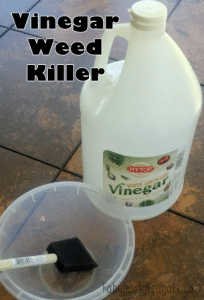
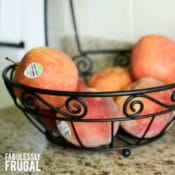

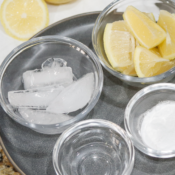
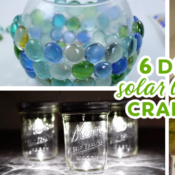
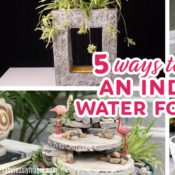





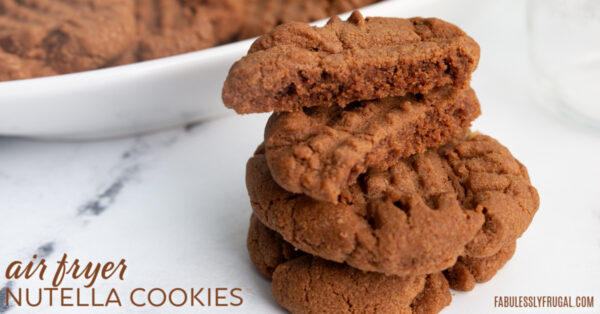

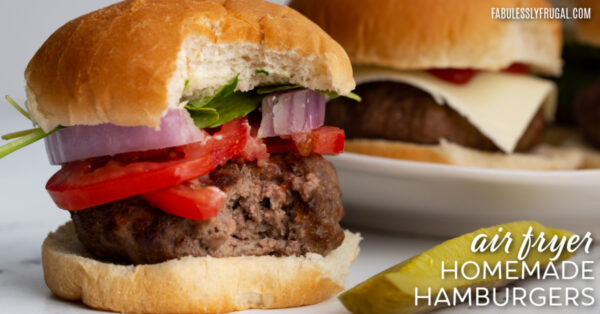
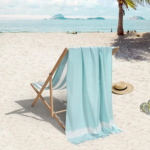





I didn’t know vinegar had so many uses. I can’t wait to try some of your tips. Thanks for sharing!
Crazy, huh?! I hope that you find some you really like. Thanks for your comment.
Just a slight correction from someone who has in her DIY career removed approximately two zillion acres of wallpaper: The best wallpaper removal entails exorcists and flame throwers. Actually, the vinegar removal tip will work on certain projects but a handheld streamer is your best option. On my last (hopefully last ever) project I used my Shark steamer. It did the job and was much lighter and easier to use than the wallpaper steamers you can rent. But if you discover wallpaper applied to un-primed drywall, consider bringing in the professionals and save your sanity. Ask me how I know.
Haha. Thank for the tips, Mandy! Makes me glad that I don’t have any wallpaper to remove right now!
I have used vinegar to clean my toilet bowl for a couple years. I pour some in and let it sit overnight. In the morning, I take my brush and all the hard water stains are gone.
That’s awesome! I’m going to try that!
Gonna kill some ants. Or at least slow them down
Yes! Woohoo!